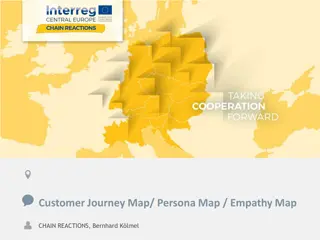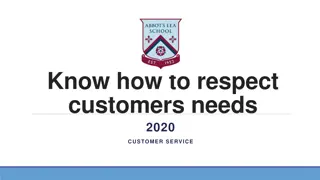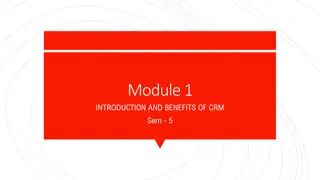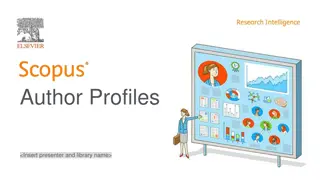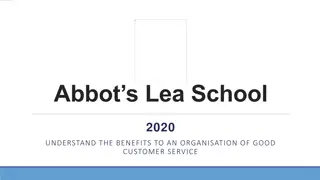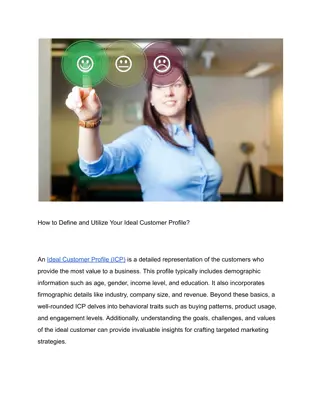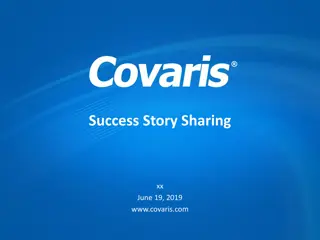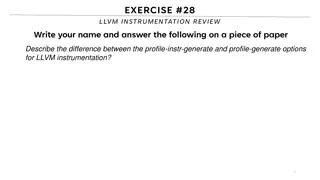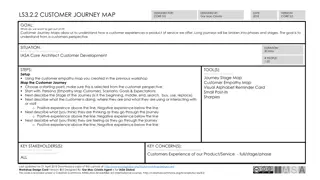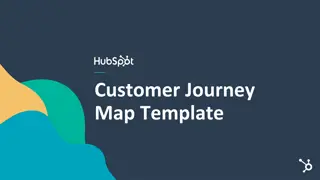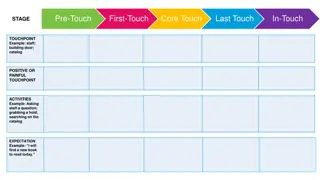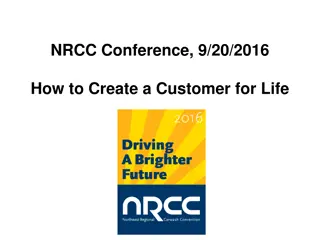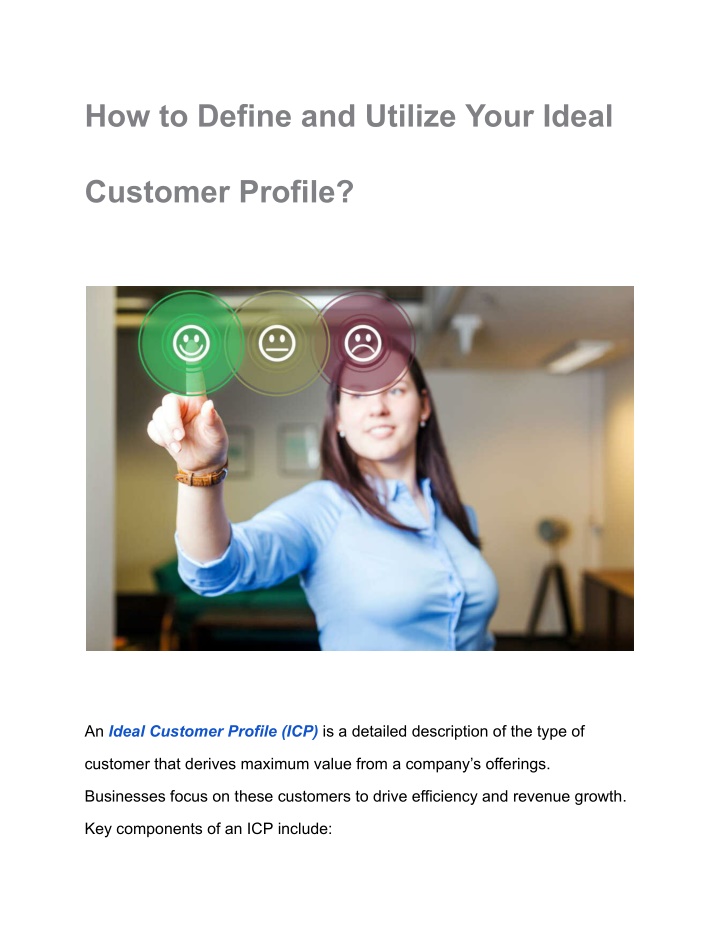
How to Define and Utilize Your Ideal Customer Profile_
In todayu2019s competitive business landscape, understanding your ideal customer profile (ICP) is crucial for driving growth and ensuring long-term success. An Ideal Customer Profile is a detailed representation of the type of customer who would ben
Download Presentation

Please find below an Image/Link to download the presentation.
The content on the website is provided AS IS for your information and personal use only. It may not be sold, licensed, or shared on other websites without obtaining consent from the author. If you encounter any issues during the download, it is possible that the publisher has removed the file from their server.
You are allowed to download the files provided on this website for personal or commercial use, subject to the condition that they are used lawfully. All files are the property of their respective owners.
The content on the website is provided AS IS for your information and personal use only. It may not be sold, licensed, or shared on other websites without obtaining consent from the author.
E N D
Presentation Transcript
How to Define and Utilize Your Ideal Customer Profile? An Ideal Customer Profile (ICP) is a detailed description of the type of customer that derives maximum value from a company s offerings. Businesses focus on these customers to drive efficiency and revenue growth. Key components of an ICP include:
Demographic information: Age, gender, income level, and education. Firmographic data: Industry, company size, revenue, and location. Behavioral traits: Buying patterns, product usage, and engagement levels. Goals and challenges: Objectives the customer aims to achieve and obstacles faced. By defining an Ideal Customer Profile, businesses can tailor their marketing, sales, and product development efforts to meet the specific needs of their best customers. Importance of Defining an Ideal Customer Profile Defining an Ideal Customer Profile (ICP) is critical for several reasons: 1. Targeted Marketing: Assures the correct audience is reached via campaigns. 2. Resource Allocation: Directs resources toward high-potential leads.
3. Sales Efficiency: Streamlines the sales process by focusing on prospects likely to convert. 4. Customer Retention: Helps identify customers who will remain loyal and provide long-term value. 5. Improved Customization: Enables tailoring of products and services to better meet customer needs. 6. Competitive Advantage: Provides insights that can differentiate a business from competitors. Key Components of an Ideal Customer Profile An Ideal Customer Profile (ICP) includes several critical elements: Demographics: occupation, education, income level, age, and gender. Firmographics: Company size, industry, location, and revenue. Behavioral Traits: User habits, purchasing behavior, and brand engagement. Technology Stack: The client employs tools and software. Goals and Challenges: Business objectives, pain points, and obstacles. Customer Value: Possibilities lifetime value, income contribution, and referral possibilities. Psychographics: Interests, values, lifestyle, and personality traits. These components enable businesses to shape targeted marketing and sales strategies efficiently.
Identifying Your Best Customers To identify the best customers, analyze existing customer data. Focus on those providing the most revenue. Consider aspects like: Demographics: Age, gender, income, location. Behavior: Purchase history, frequency, average order value. Engagement: Interaction with the brand through social media, email, and website visits. Use technologies like Customer Relationship Management (CRM) systems to acquire information. Segment customers based on common characteristics. Conduct surveys to better understand preferences and needs. Monitor Net Promoter Score (NPS) to determine how satisfied customers are. Identifying patterns helps in refining the Ideal Customer Profile (ICP).
Demographic Factors to Consider Addressing key demographic elements is crucial for defining an ideal customer profile. 1. Age: Identify the age range of the target audience to tailor marketing efforts. 2. Gender: Determine which gender would be more inclined toward the product or service. 3. Income Level: Ascertain the income bracket to ensure affordability and buying potential. 4. Education Level: Understand the education level to craft appropriate messaging. 5. Occupation: Recognize common job roles to align product benefits with job needs. 6. Location: Pinpoint geographic areas for localized marketing campaigns. Considering these factors provides a comprehensive view of the target market.
Psychographic Factors to Include To comprehensively define an ideal customer profile, one must incorporate several psychographic factors: Interests and Hobbies: Identifying what catches the customer s attention. Values and Beliefs: Understanding the core principles guiding their behavior. Lifestyle: Gauging daily routines, work-life balance, and leisure activities. Personality Traits: Assessing whether they are introverted, extroverted, or ambiverted. Motivations and Desires: Pinpointing what drives their decisions and actions. Buying Attitudes and Patterns: Observing how they approach purchasing and brand loyalty. Social Status: Considering their social standing and influence within their community. These factors enable targeted marketing strategies and more meaningful customer engagements.
Behavioral Characteristics Understanding the behavioral characteristics of the ideal customer is essential for effective profiling. Key aspects include: Buying Patterns: Analyzing frequency, volume, and timing of purchases. Decision-Making Process: Identifying the steps taken before making a purchase. Brand Loyalty: Measuring the level of loyalty towards specific brands. Product Usage: Observing how customers interact with products or services. Feedback and Reviews: Considering the type and frequency of customer feedback. Engagement Levels: Assessing participation in promotional activities and social media. Examining these elements helps in tailoring marketing strategies to better meet the needs and preferences of the ideal customer.
Geographic Considerations It s critical to comprehend where the ideal client is located. It influences buying habits, communication preferences, and service accessibility. 1. Target Regions: Identify regions where demand for the product is high. 2. Economic Conditions: Assess local economic stability and consumer spending power. 3. Cultural Preferences: Adapt marketing strategies to align with regional cultural norms. 4. Regulatory Environment: Make sure that local rules and regulations are followed. 5. Logistics: Take into account whether distribution and delivery are feasible in the designated locations. Geographic segmentation ensures that marketing efforts are efficiently directed, catering to specific regional needs and optimizing resource allocation.
Gathering Customer Data Collecting customer data is vital for building the Ideal Customer Profile (ICP). Utilize multiple data sources to ensure accuracy and comprehensiveness. Surveys and Questionnaires: Distribute forms to existing customers to gather demographics, preferences, and feedback. Customer Interviews: Conduct in-depth interviews to understand pain points and product usage. Website Analytics: Analyze website traffic to determine user behavior and popular features. Social Media Insights: Monitor social media platforms for customer interactions and sentiment analysis. Sales Team Feedback: Engage with sales teams to gain insights into customer challenges and objections. Customer Support Data: Review support tickets and inquiries for recurring issues and common questions.
Utilizing Customer Feedback Customer feedback is a vital component in refining the Ideal Customer Profile (ICP). Organizations should: 1. Collect Feedback: Make use of direct encounters, evaluations, and surveys. 2. Analyze Responses: Identify common themes and issues. 3. Segment Data: Organize feedback by customer demographics. 4. Implement Changes: Adjust marketing strategies and product offerings based on insights. 5. Monitor Results: Track the impact of changes on customer satisfaction and retention. Feedback analysis reveals customer preferences and pain points, offering a clear direction for tailoring services and marketing efforts. Regularly updating the Ideal Customer Profile based on feedback ensures alignment with evolving customer needs.
Analyzing Market Trends Analyzing market trends involves understanding and interpreting data to identify patterns in consumer behavior over time. This requires: Data Collection: Gathering information from various sources like sales reports, social media, and industry publications. Data Analysis: Using statistical tools to evaluate market dynamics, segment growth, and consumer preferences. Competitive Analysis: Assessing rivals strategy and market positioning. Forecasting: Predicting future market movements based on historical data and current trends. These steps ensure businesses align their offerings with evolving market demands and consumer expectations. Segmenting Your Audience
Identifying distinct segments within the target audience is crucial. Segmentation can be based on various parameters: Demographics: Age, gender, income level, and education. Geographic: Location, climate, and urban vs. rural settings. Psychographics: Lifestyle, values, and interests. Behavioral: Purchase behavior, usage, and brand loyalty. Utilizing data analytics tools can reveal patterns and trends. Surveys and customer feedback offer direct insight. Each segment s unique characteristics and needs should guide marketing strategies. Personalization within segments can enhance engagement and conversion rates. Successful segmentation results in more precise targeting and optimized resource allocation. Tools and Technologies for Profiling
Businesses can leverage various tools and technologies to effectively define and utilize their Ideal Customer Profile (ICP). These include: Customer Relationship Management (CRM) Systems: Salesforce, HubSpot Data Analytics Platforms: Google Analytics, Mixpanel Social Media Analytics: Hootsuite, Sprout Social Survey Tools: SurveyMonkey, Typeform Market Research Services: Nielsen, Gartner CRMs help store and manage customer interactions. Data analytics platforms track user behavior. Social media analytics provide insights into customer engagement. Surveys collect direct feedback. Market research services offer comprehensive industry data. Employing these tools enables businesses to craft detailed, actionable Ideal Customer Profiles. Developing Customer Personas Developing customer personas involves gathering detailed demographic and psychographic information about customers. Steps to create effective personas:
1. Research: Analyze market data, conduct surveys, and study competitors. 2. Segment: Group customers based on similar traits like age, location, and behavior. 3. Profile: Develop complete profiles for each sector including: Demographics: Age, gender, income, education Psychographics: Interests, values, lifestyle Behavior: Buying habits, product use Useful tools include customer surveys, interviews, and analytics. By understanding customer personas, businesses can tailor marketing efforts to meet specific needs, driving engagement and loyalty. Integrating ICP into Marketing Strategies An Ideal Customer Profile (ICP) helps tailor marketing efforts to attract the right audience. Here s how to integrate ICP effectively: 1. Content Creation: Provide information that speaks to the ICP s interests and particular pain issues. 2. Channel Selection: Focus on platforms where the ICP is most active. 3. Personalized Messaging: Craft messages that resonate with the unique needs of the ICP.
4. Ad Targeting: Use ICP data to refine targeting criteria for better ad placements. 5. Product Development: Align product features and benefits with ICP preferences. 6. Feedback Loop: Continuously gather data to refine and adjust the ICP over time. Prioritize quality over quantity when implementing ICP-driven strategies. Aligning Sales with ICP Aligning sales with the Ideal Customer Profile (ICP) ensures targeted efforts. Sales teams should: Understand the ICP s Characteristics: A thorough understanding of the psychographic, behavioral, and demographic characteristics. Tailor Messaging: Customize sales pitches to address specific pain points and needs. Utilize Data-Driven Insights: Leverage data analytics to track and predict customer behaviors. Prioritize Leads: Focus on leads that closely match the ICP to optimize conversion rates. Collaborate with Marketing: Work closely with marketing to ensure consistent messaging and strategy. Regular Training: Conduct regular training sessions to keep the team updated on the ICP and industry trends. Personalizing Customer Interactions Effective utilization of an Ideal Customer Profile (ICP) hinges on personalizing interactions. Businesses must adapt their strategies to resonate with target customers.
Segmenting Audience: Break down the target audience into smaller, more specific groups based on shared characteristics. Tailored Messaging: Craft messages that address the unique pain points and desires of each segment. Technology Utilization: Leverage CRM systems and marketing automation tools to track and manage customer interactions. Feedback Loop: Create a mechanism to collect input and take appropriate action to keep improving methods. Value Proposition Alignment: Ensure that the product or service offerings are aligned with the needs and preferences of each customer segment. Measuring Success and Adjusting ICP Regularly assessing success indicators is crucial to ensure the ICP aligns with business goals. Metrics to monitor include: Customer Acquisition Cost (CAC) Customer Lifetime Value (CLV) Conversion Rates Customer Retention Rates Steps for adjusting ICP:
1. Analyze data: Review key performance metrics to identify trends and gaps. 2. Gather feedback: Collect input from sales, marketing, and customer support teams. 3. Identify patterns: Look for consistent traits among high-performing customers. 4. Update profile: Refine the ICP criteria based on new insights. 5. Implement changes: Adjust marketing strategies and sales tactics to reflect the updated ICP. Common Mistakes to Avoid 1. Overgeneralizing the Audience: Crafting an Ideal Customer Profile (ICP) that s too broad dilutes marketing efforts. 2. Relying Solely on Demographics: Neglecting psychographics can lead to an incomplete ICP. 3. Ignoring Market Research: Skipping thorough market analysis results in inaccurate profiles. 4. Not Updating the ICP: Stagnant profiles lead to missed opportunities; regular updates are critical. 5. Lacking Buy-In from Stakeholders: Without consensus, implementation of the ICP can falter. 6. Focusing Only on Ideal Traits: Ignoring customer pain points can hurt service effectiveness.
7. Neglecting Data Quality: Poor data leads to erroneous ICPs and misguided strategies. 8. Overlooking Competitor Analysis: Ignoring competitors strengths and weaknesses impacts positioning. Next Steps Once the Ideal Customer Profile (ICP) is clearly defined, here are the actionable steps that must be taken: 1. Align Sales and Marketing: Ensure both teams understand the ICP. Create content and messaging specific to this persona. 2. Data Analysis: Regularly review customer data. Adjust the ICP based on market trends and feedback. 3. Targeted Outreach: Focus marketing campaigns on ICP. Train sales teams to recognize and prioritize these leads. 4. Product Development: Adapt product features based on ICP needs. Gather ongoing feedback from ICP segments. 5. Performance Metrics: Set KPIs related to ICP engagement. Monitor ROI from ICP-focused strategies.




